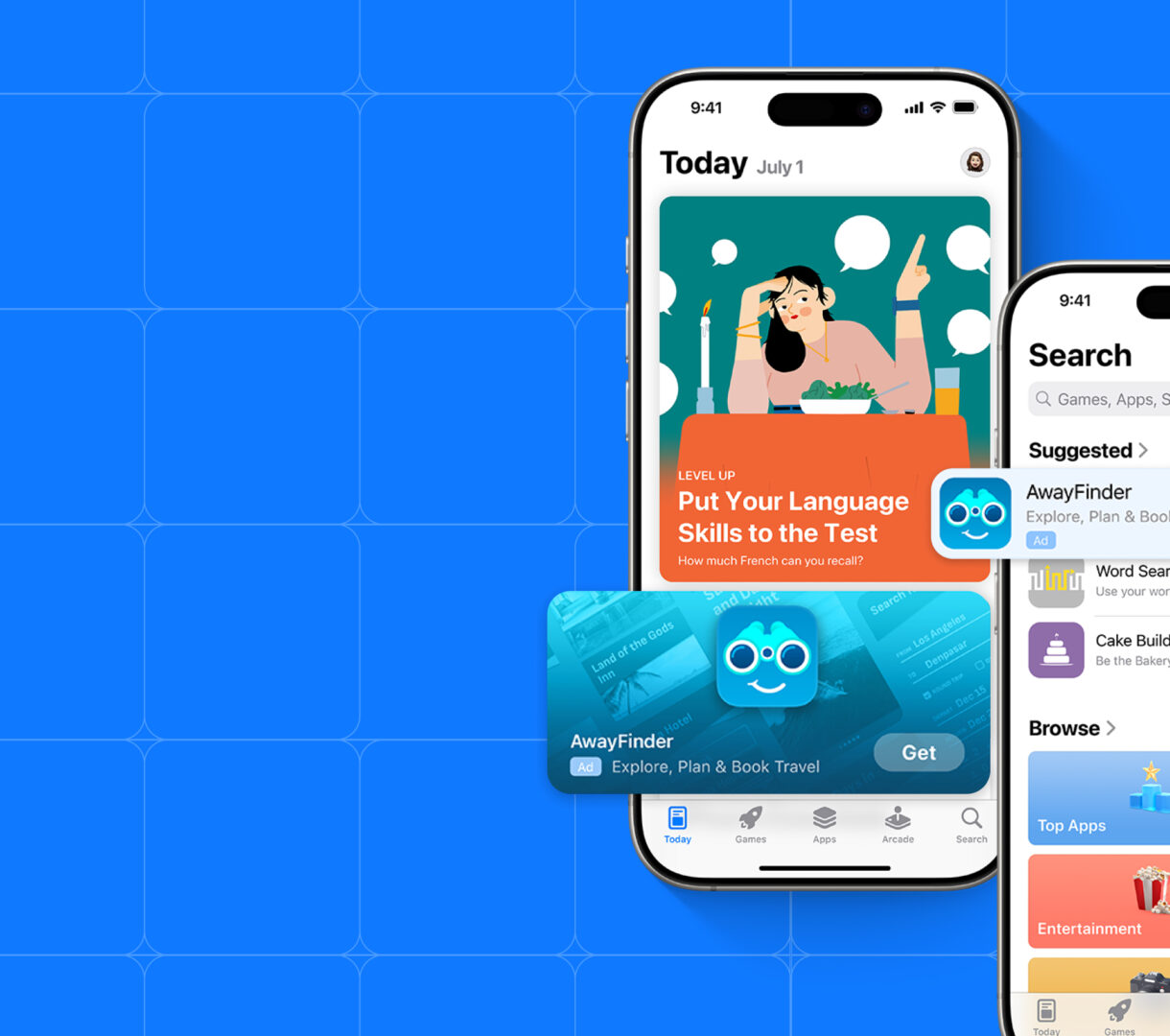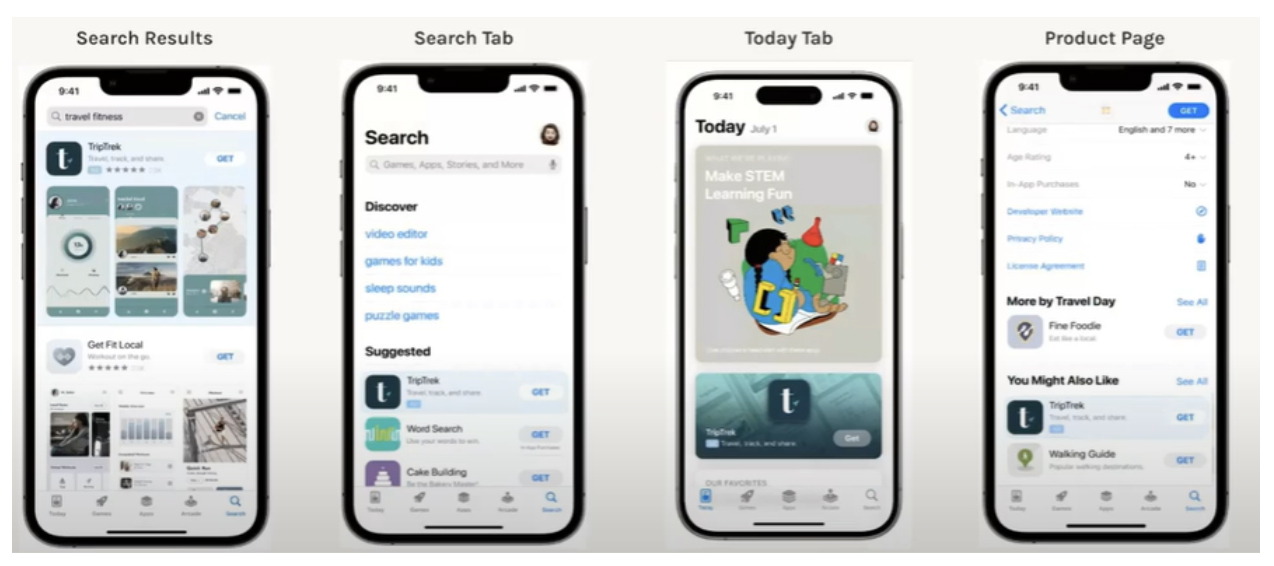
How to Scale Your Campaigns with Apple Search Ads Effectively
Scaling your Apple Search Ads (ASA) campaigns isn’t just about spending more; it’s about spending smart. Done right, it can be a powerful growth lever for your app. Done wrong, it becomes a money pit.
So before you pour more budget into your campaigns, pause. Are you scaling at the right time? Are you using proven techniques? Or are you just guessing and hoping for the best?
In this guide, we’ll walk you through exactly when to scale, the most effective strategies to maximize return on ad spend (ROAS), and the common traps that even experienced marketers fall into. Whether you’re just getting started or ready to level up your ASA performance, this is your roadmap to scaling with confidence and precision.
What is Apple Search Ads, and why should you scale your campaigns with it?
Apple Search Ads (ASA) is Apple’s official advertising platform that lets you promote your app directly within the App Store. With ASA, you can bid for prime ad placements across several key areas: Search Results, the Search Tab, the Today Tab, Product Pages, and other high-visibility spots.
So, you might ask, “Why should I scale my campaigns with Apple Search Ads?”
What makes ASA especially powerful is its precision. It puts your app in front of high-intent users (people actively searching for apps like yours) right when they’re ready to download. This means better visibility, more downloads, and higher conversion rates.
In a crowded marketplace with over 1.8 million apps, standing out is tough. ASA gives you a competitive edge by helping you reach the right audience, in the right place, at the right time, without relying on third-party tracking.
When to scale: key indicators to watch
Scaling Apple Search Ads (ASA) campaigns is exciting, but timing is everything. Scale too early, and you risk wasting precious budget. Scale too late, and you leave growth on the table. So, how do you know it’s time to go big?
Below are the key indicators that signal you’re ready to scale, based on both hard metrics and real-world experience.
1. Positive ROI and profitable acquisition
At the heart of smart scaling is this simple rule: make more from your users than it costs to acquire them.
- CAC vs. LTV: Your Customer Acquisition Cost (CAC) should be significantly lower than the Lifetime Value (LTV) of your users. A healthy benchmark is an LTV: CAC ratio of at least 3:1.
- Break-Even or Better: Are you recovering your acquisition costs by Day Zero or Month Zero? If you’re breaking even (or profiting) on user acquisition within that window, it’s a strong green light to scale.
- Consistent ROI: If your ASA campaigns are showing reliable, repeatable returns, that’s a clear signal your acquisition model is working.
2. Strong and steady conversion rates
A consistent flow of users through your funnel is a sign of campaign health.
- Monitor conversion rates across key touchpoints:
- Ad Click → App Install
- Install → Registration
- Registration → Subscription or Purchase
If you’re seeing high and stable conversion rates at each step (and no major drop-off), your campaign has a strong foundation for scaling.
3. Daily budget is maxed out
Are your ASA campaigns constantly hitting their daily budget cap? That means Apple is limiting how much you can spend even though demand exists. Before you touch your bids, simply raise your daily budget. If your current CPI and ROI remain stable after increasing spend, you’re ready to scale further.
4. Product-market fit is evident
Beyond metrics, listen to your users. Are they raving about your app? Leaving five-star reviews? Sharing it with others?
These qualitative signals (excitement, engagement, loyalty) are signs your app is solving a real problem. Pair that with a solid ad performance, and you’re in a prime position to scale.
5. You’ve Tightened Your Onboarding and Paywall Funnel
Don’t scale a leaky funnel. Ensure:
- Your onboarding flow educates users fast.
- Your paywall displays correctly and early.
- Subscription events are firing properly and tracked (especially if you’re sending this data back to Meta or other platforms).
A misfiring paywall or broken conversion event can sabotage your campaigns even if everything else is dialed in.
6. You Have the Revenue Buffer to Experiment
Many successful app marketers recommend hitting ~$10K MRR (Monthly Recurring Revenue) before launching serious ad campaigns. This gives you a financial cushion and enough user data to make informed scaling decisions.
7. You’re Seeing Reliable Signals from Multiple Channels
If ASA is working and you’re seeing alignment with other channels like Meta (Facebook/Instagram), it shows that your messaging, targeting, and funnel are synchronized. That cross-platform signal synergy is a strong indicator of scalability.
Techniques for efficient scaling of ad campaigns
Scaling Apple Search Ads requires more than budget increases. It demands strategic refinement across every layer of your campaign structure. Below are seven advanced techniques to help you scale efficiently, profitably, and sustainably.
1. Establish clear performance benchmarks
Before scaling, define what success looks like and make those metrics visible.
Key benchmarks to track:
- Conversion Rate (CR): % of users who install after tapping
- Cost Per Tap (CPT): Average spend per tap
- Cost Per Acquisition (CPA): Total cost to acquire a user
- Return on Ad Spend (ROAS): Revenue generated per dollar spent
- Lifetime Value (LTV): Predicted value each user brings
- LTV:CAC Ratio: Should ideally be 3:1 or higher
Build a live dashboard segmented by campaign, ad group, and keyword. This will quickly reveal which areas are scaling-ready and which need optimization.
2. Expand your keyword portfolio
Scaling starts with reach, and nothing expands reach like the right keywords.
How to scale with keywords:
- Use Search Match and discovery campaigns to uncover untapped terms
- Conduct competitive research with ASO tools to identify what’s working for others
- Target category-adjacent and complementary brand keywords
- Structure by match type:
- Exact Match: High-performing, high-intent terms
- Broad Match: Moderate-intent, discovery-friendly
- Search Match: For exploratory expansion
3. Leverage geographic expansion
When you’ve maxed out your primary market, expanding geographically unlocks new growth.
Steps to scale by location:
- Start with Tier 1 countries (US, UK, CA, AU)
Move into Tier 2 (Germany, France, Japan) and emerging markets (India, Brazil, Mexico) - Localize:
- Keywords
- Creatives
- Messaging (including tone, imagery, and cultural nuances)
- Adjust bids based on market-specific LTV and competition levels
- Set up separate campaigns per region for precise optimization
4. Implement advanced bidding strategies
Smart bidding is at the heart of efficient scaling. It’s where spend meets strategy.
Bidding techniques to implement:
- Device-Specific Bidding: Adjust for performance differences between iPhone and iPad users
- Dayparting: Increase bids during high-conversion times (e.g., evenings, weekends)
- Demographic Targeting: Use ASA’s limited targeting to focus on high-LTV segments
- New vs. Returning Users: Tailor bid strategy for acquisition vs. re-engagement
- Automated Rules: Build logic-based automations that adjust bids based on impression share, conversion rate, and cost efficiency
5. Optimize campaign structure
As you scale, a messy structure can sink your performance. A well-organized campaign structure allows better budget control, tracking, and bid optimization.
Structural best practices:
- Segment by match type: Exact, broad, and search match in separate campaigns
- Group by keyword themes: (e.g., meditation, productivity, wellness)
- Isolate high-performers: Give your best keywords dedicated campaigns and budgets
- Conquest campaigns: Target competitor brands strategically
Budget Distribution Rule:
- 70% → proven performers
- 20% → growth opportunities
- 10% → experimental campaigns
6. Leverage creative optimization
Creative alignment with keyword intent can make or break your CPI.
Creative strategies to scale smarter:
- Use Product Page Optimization (PPO) to test icon, screenshots, and preview videos
- Align screenshots with keyword-specific user intent
- Rotate creatives seasonally or with feature launches
- Develop Custom Product Pages (CPPs) for different search themes and user segments
7. Strengthen post-install tracking & LTV modeling
Efficient scaling isn’t just about bringing users in. It’s about bringing in the right users. That’s why post-install data is critical.
How to scale using deeper data:
- Configure SKAdNetwork correctly for Apple’s attribution framework
- Track key in-app events (e.g., registration, trial start, subscription)
- Build LTV prediction models based on cohort behavior
- Send purchase and event data back to ad platforms (e.g., Meta, ASA) to improve algorithmic targeting
- Segment by revenue potential and optimize bids accordingly
Now, you might ask, “Why does this matter?” Scaling with only CPI in mind can lead to high churn. Scaling with LTV-informed bidding leads to lasting growth and profitability.
Scale with precision and purpose
Scaling isn’t a sprint; it’s a system. By establishing clear benchmarks, organizing your campaigns effectively, expanding your keyword and market reach, and continuously refining your bidding and creatives, you’ll set yourself up for long-term, scalable success.
Remember: Don’t scale chaos, scale clarity.
Avoiding common pitfalls during campaign scaling
Scaling a campaign is exciting, but it’s also risky. One wrong move can turn a high-performing strategy into a money pit. The key to successful scaling isn’t just knowing when to push forward. It’s knowing when to pause, reassess, and adjust.
Here are four of the most common mistakes marketers make when scaling Apple Search Ads and how you can avoid them:
- Raising bids before increasing budgets: Don’t jump straight to higher bids. If your daily budget is maxed out, first raise that to allow more reach at the same efficiency.
- Ignoring organic cannibalization: Overbidding on brand terms can cannibalize organic installs. Calculate the “Cost Per Protected Install” to decide whether brand defense is truly worth it.
- Letting discovery campaigns run wild: Discovery campaigns are not set-it-and-forget-it. Actively pull out high-performing terms and cap budgets to avoid wasted spend.
- Neglecting seasonality and time-of-day variance: Consider time-based trends. Bidding more aggressively late in the day or near month-end when competitors run out of budget can reduce CPT.
Avoiding these four pitfalls can make the difference between burning budget and unlocking sustainable growth. The most successful Apple Search Ads campaigns are not those that scale the fastest, but those that scale with clarity, control, and calculated intent.
Scale your app marketing campaign now
Scaling your app marketing campaign isn’t just a growth tactic but also a game-changer. When done right, it transforms visibility into downloads, and downloads into long-term revenue.
Whether you’re just beginning to scale or looking to unlock new levels of performance, ShyftUp is the partner you need. As one of the industry’s leading user acquisition agencies, ShyftUp brings expert strategy, advanced tools, and a proven track record to help you scale smarter and faster.
Don’t waste another dollar guessing your way through campaign scaling. Let the experts help you drive real, measurable growth.
Schedule your free consultation with ShyftUp today and discover what’s truly possible for your app. Together, let’s take your app to the top.
What is Apple Search Ads, and why should you scale your campaigns with it?
When to scale: key indicators to watch
1. Positive ROI and profitable acquisition
2. Strong and steady conversion rates
4. Product-market fit is evident
5. You've Tightened Your Onboarding and Paywall Funnel
6. You Have the Revenue Buffer to Experiment
7. You’re Seeing Reliable Signals from Multiple Channels
Techniques for efficient scaling of ad campaigns
1. Establish clear performance benchmarks
2. Expand your keyword portfolio
3. Leverage geographic expansion
4. Implement advanced bidding strategies
5. Optimize campaign structure
6. Leverage creative optimization
7. Strengthen post-install tracking & LTV modeling
Scale with precision and purpose
